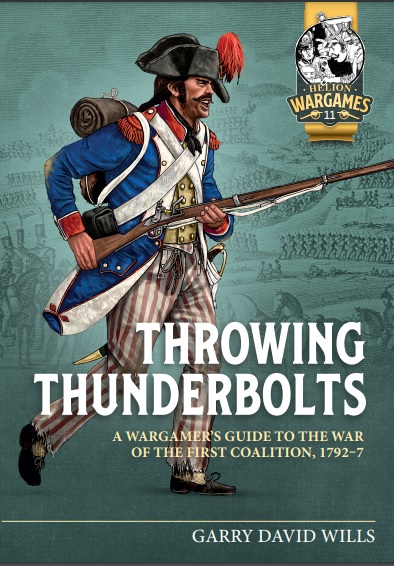
Introduction: It is now nearly twelve months since my book, Throwing Thunderbolts, was published. Since that date I have collected the following corrections and a few additions to the text.
Cover: the grenadier’s sabre is not the correct model (1767) but a later one. The handle grip should not be wrapped in black leather.
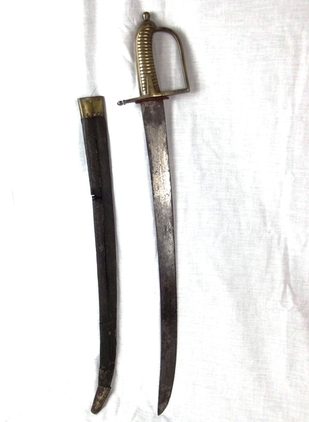
p.11 The judgement of the King took several votes in the National Convention;
15 January: First vote on the king’s judgement at the Convention. He is found guilty of conspiracy against public liberty by 707 votes to 0.
16 January: Vote in the Convention on the punishment to be inflicted on the king, beginning at 8 p.m. and ending at 8 p.m. the following day.
17 January: Result at 9 p.m. of the vote under pressure from a raging or wild audience: 361 votes in favour of the death penalty 360 against (including 26 supporters of the death penalty with reprieve).
20 January: Refusal of the suspension of the execution of the King’s judgment by the Convention by 380 votes to 310.
21 January: Execution of the king. Louis Capet was guillotined on the Place de la Révolution at 10:22 a.m.
p.22 footnote 61: the reference for this is Phipps, West, p.160.
p.22, first para: The Battle of Mas Deu was the day before on the 19 May. François-Xavier de Llucia’s report, which details the fighting, was dated the 20th. Phipps gives the date as the 20 May.
p.23 Marcé was sent to the guillotine on 29 January 1794.
p.26 d’Elbée was wounded at Cholet not killed.
p.28 footnote 100: Lieutenant-General Sir Charles Grey was 1st Earl Grey.
p.31: The battle of Le Cateau is normally associated with the action on the 29 March 1794. The action on the 26 April is more often called the Battle of Beaumont.
p.34, 2nd Paragraph: Robespierre went to the guillotine on the 28 July.
p.34, 3rd Paragraph: Le Quesnoy fell on the 15 August.
p.34, footnote 126: the page number should be 321.
p.42, Casa Fuorte (from Phipps) should probably read Casa Fuerte which means ‘strong house’ in Spanish.
p.43, 1st paragraph: the date at the end should be the 25 November.
p.49, 2nd Paragraph; the spelling of the river is IJssel.
p.62, footnote 248: the correct brigadier is Major General Welbore Ellis Doyle the brother of John.
p.97, May 12; the frigate squadron was commanded by Lawrence William Halsted of HMS Phoenix.
p.104: Forlì is spelt with an accent on the i.
p.110; The surrender at Fishguard was actually early on the morning of the 24 February.
p.131: The Law of 22 July 1792 resulted in 32 battalions which were called reserve battalions or ‘Soissons’ battalions or simply volontaires nationaux battalions.
p.147, 1st Paragraph of Prussia section: each musketeer and grenadier battalion had 2x 6pdr and each fusilier battalion had 1x 3pdr gun. Showalter gives two guns per regiment but Hofschrӧer is clear in his Prussian Napoleonic Tactics 1792 –1815, p.10 (Osprey, 2011).
p.148 2nd Paragraph: Showalter describes the Kürassiers as wearing breastplates, but they were withdrawn following an order in 1790 and none were worn during our period. (Hofschroer, Prussian Cavalry of the Napoleonic Wars (I) 1792 –1807, p13 (Osprey, 1985).
pp.210–211: Battalion Guns; Consistent with the correction for p.147, the number of models for the Prussian battalion guns at Pirmasens needs to be increased; Prinz zu Baden’s brigade should have 3 models (21 points); von Roeder’s Brigade 2 (14); von Herzberg’s brigade 3 (21); von Romberg’s Brigade 3 (21). The points total for the army becomes 2054.
In the scenarios for Linselles and Pirmasens I have represented the battalion gun sections in Black Powder as single models with shooting dice of 2/1/1 dependent on range. In the Boxtel scenario they are given shooting dice of 1/1/1. In part this reflects the larger battalions at Boxtel. In the Mondovi scenario, by which time the demi-brigades artillery allocations have been reduced from six gun companies to three gun sections, I used the battalion guns as single units of three and four guns with shooting dice of 2/1/1.
In designing the Linselles and Pirmasens scenarios I was trying to keep close to the ‘rules as written’, on reflection I prefer to use fire dice of 1/1/1 rather than 2/1/1 for the two battalion gun sections in those scenarios. There are still issues with these small two guns sections when compared to the effect of a six gun company represented by one model with 3/2/1 dice. In my own games, for these two gun sections as well as the 1/1/1 shooting dice, I also employ a range dependent to hit score of (4+/5+/6) and a range dependent save against disorder (6, 5+, 3+), to give effects that are equivalent to that of the 6 gun companies.
These changes influence the way the points are worked out for the battalion gun sections. My assumption is that a standard Black Powder artillery model/unit represents 6 guns for the 3/2/1 shooting dice. Consequently when the number of guns represented is changed, the points value changes in relation to the number of guns. Thus a two gun section is worth only a third of the points of a six gun section. Alternatively an 8-gun company is worth 133% of a standard unit. These changes are reflected in the points values given above.
Like wise the points values of French battalion gun sections become; Right Column = 14, Centre column = 35 and Left Column = 35. The points total for the army becomes 1327.
It is perhaps useful to restate my rules for battalion gun sections;
a) They are considered as separate units attached to their parent units.
b) They will move with the orders of the parent unit when within 6 cm/inches.
c) They will be affected by any adverse break test result on the parent unit, regardless of position.
d) When in base-to-base contact with the parent unit they contribute to any closing fire.
e) They cannot provide support to their parent unit.
f) Their effect on morale/saving throws is restricted to -1 at all ranges.
You may of course choose to brigade the battalion guns into 6 gun units with 3/2/1 fire dice as recommended in the rules and supplements, but I think this is too anachronistic for our period.
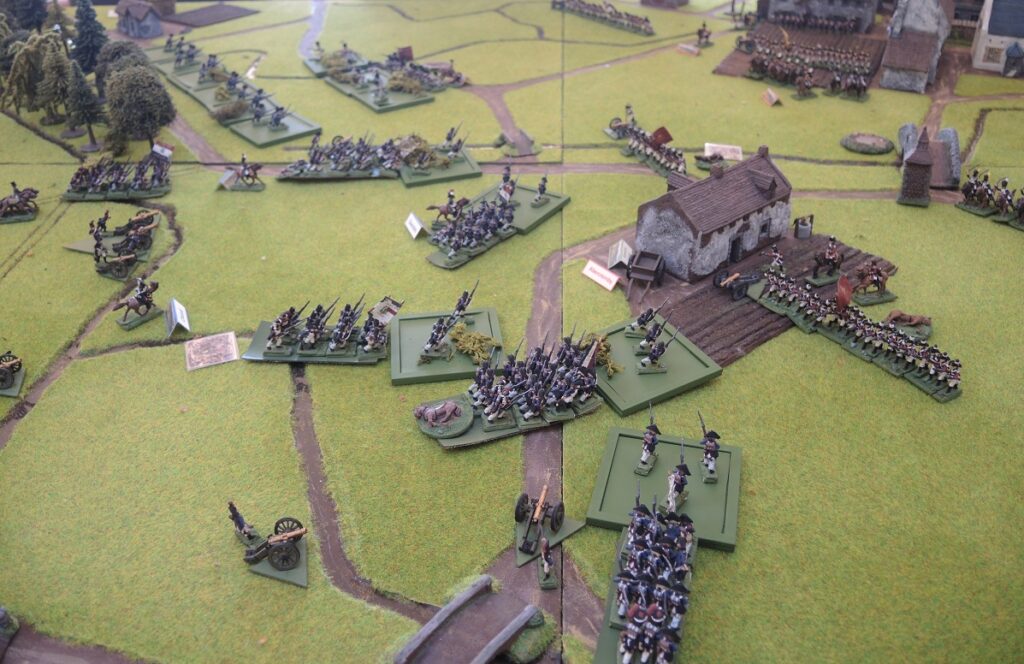
p.210-211: These tables show the Schutzen organised by brigade, as was commonly the case, at Pirmasens the Schutzen were detached from their battalions and sent to the Steinbach sector of the battlefield, there it might be more useful to merge the Schutzen into one ‘SMALL’ unit of 12 figures, and give them the marauders special rule.
p.222: The Représentants: the third mention of the Représentants should singular.
Two further optional Scenario Special Rules
The Pre-Game Bombardment of Fort Mulgrave:
The artillery in Fort Mulgrave is difficult to estimate fully. While we know that the redoubt held 22 guns, we don’t know the effect of the pre-assault bombardment by Bonaparte’s artillery. Originally I chose three models but you may prefer to increase this to four, adding an additional Standard Smoothbore model. They would be arranged as follows; Alternatively you may wish to reflect as a variable in the scenario rules. At the beginning of the scenario, the French player should roll a D6 and on a score of 1 or 2, the bombardment was less effective and an extra Standard Smoothbore model is added to the redoubt;
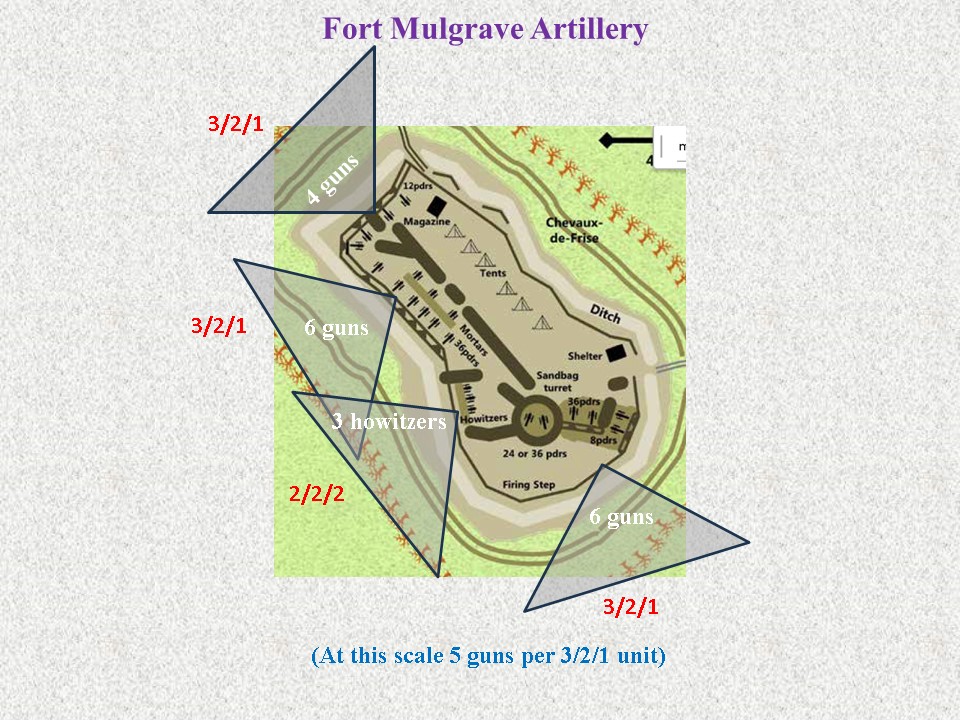
Under Black Powder rules, the artillery in the Fort Mulgrave will break if needing a Break test while in a position to support if the infantry is involved in the close combat but not if the artillery are in the close combat (because artillery cannot be supported).
How awake was the Allied defence?:
At the beginning of the scenario the Allies roll 1D6, on a roll of 5 or 6 the Staff Rating of the Allies is increased to 8 and Izquierdo gains a re-roll.
p.225: The Caz R.I. Malaga and the Picquet line should both have the ‘skirmish’ ability. The Piquet line can also be split into two ‘tiny’ units, one Spanish and one British/Naples (the R.I. Bologna was Neapolitan).
p.246: Additional Notes on the Terrain
The wooded terrain affects all movement on the hills, the text ‘when below the 600m contour’ should be deleted (this was originally referring to the slopes of the hill rather than the woods).
One source claims the bridges on the Corsaglia were destroyed and that the Corsaglia itself was unfordable further north around Lesegno (Guerre della Alpi, p.296). However, the Corsaglia was forded by the French at Moline (Fabry, Memoires, p.103). One source suggests that the stone bridge at Torre Mondovi was intact on the day of the battle (Moris & Krebs, Campagnes, p.420). However, other sources suggest that the bridge at Torre was captured and repaired by Guieu during the night before the battle (Guerre della Alpi, p.297; Fabry, Memoires, p.103), although they may be referring to the bridge near the T. Casotto.
p.247, footnote 141: Casale battalion not Canale.
p.248: : The commander’s correct name was Colonnello Brigadiere Gioan Battista Civalieri di Masio, he was 56 years old in 1796 and had previously commanded the second regiment of the Legion Leggere.
As described on p.154, the Legion was disbanded on April 7, 1795, and with its forces these two light regiments were formed. Therefore the heading Legione Reale delle Truppe Leggere should be deleted. (N.B. In his account Fabry still refers to them as the Légion Légère.)
The 20:1 figure numbers for the 1° Batt. 2° Reggimento del Cacciatori and for the 1° Battaglione del Cacciatori Colli-Ricci should be 18 not 11. This means the column total should be 113 not 97. Secondly the OOB reference includes a merged ‘battalion’ of the 6 coys of the chasseur and grenadier flank companies of the 3 battalions of the two Reggimenti del Cacciatori, with a strength of 154 men. I chose not to include them as the strength of the Piedmontese force was already well beyond Fabry’s ‘barely 2,000 men’. To include this unit, add a TINY unit of 6 figures (1:33) with stats of 1/1/+4/1 (19 points).
From 20 March 1796, Colli-Ricci commanded the ‘regiment’ of two Caccciatori battalions. (La Guerra del Alpi, p.54). The companies that made up Colli-Ricci’s Cacciatori two battalions were from the following regiments;

(Source: La Regie Truppe Sarde, p.27, for facings see pp.128–129, noting modifications on p.131)
The chart below summarises the history of the Sardinia-Piedmont light infantry during the War of the First Coalition based on La Regie Truppe Sarde, pp.27-33.

Looking at the research again it is likely that the two units of Corpo Franco each represent 4 companies of two figures each. These companies only had 60-85 men in February 1796 (Nafziger OOB).
p.249: The numbers of the demi-brigades given here are the numbers from the 2nd Amalgamation as denoted by the cadre demi-brigades de bataille from the 1st Amalgamation. The 2nd Amalgamations happened on 10 April 1796 (19e), 14 October 1795 (46e), 29 February 1796 (84e). (See Smith, Napoleon’s Regiments, pp. 78, 94, 126). These numbers were changed in May 1796 by a lottery, which allocated new numbers – the 46e became the 39e, the 19e became the 69e and the 84e became the 25e. Furthermore until new flags were available, which in the Armée d’Italie, didn’t happen until after December 1796, the flags carried by these units were those of the cadre demi-brigades de bataille, 19e, 46e and 84e. These flags were all of the 1794 pattern, with the 2nd battalion carrying one design while the 1st and 3rd carried identical flags of a different design. (see Letrun, Charrie, p.17, Krebs & Moris, PJ93).
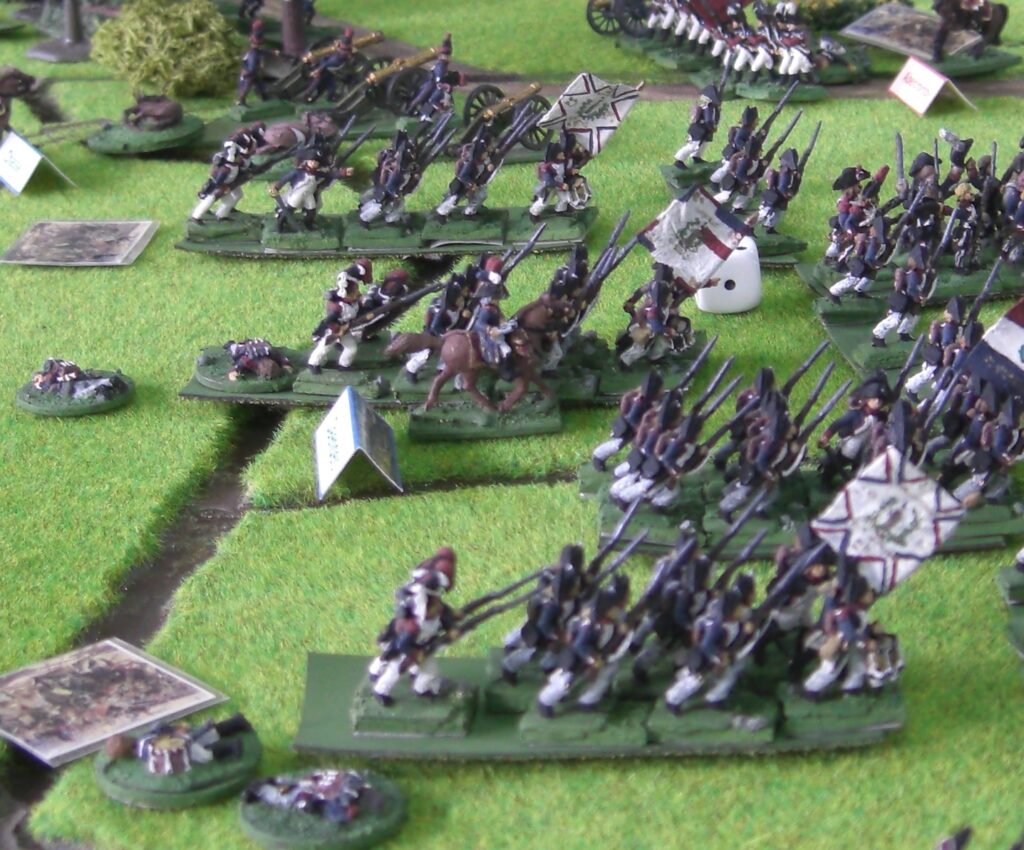
p.250: The commander’s name was Colonnello Brigadiere Gioan Battista Civalieri di Masio.
To improve the Piedmontese prospects, Colli-Ricci could be represented as sub-commander. He would use the Staff Rating of 7 and could issue movement and rally rules but not ‘follow me’ orders.
p.251, last line: the date of the battle of Borghetto was the 30 May not the 21st (see page 83).
p.266: The reserve artillery should be divided into four stands: Northern redoubt (1 strength point), Southern redoubt (3), Davidovich (3) and Sebottendorf (3).
p.267: Marmont’s artillery should be recorded as horse artillery.
p.268: Weydenfeld’s detachment arrives on turn five of the six turns.